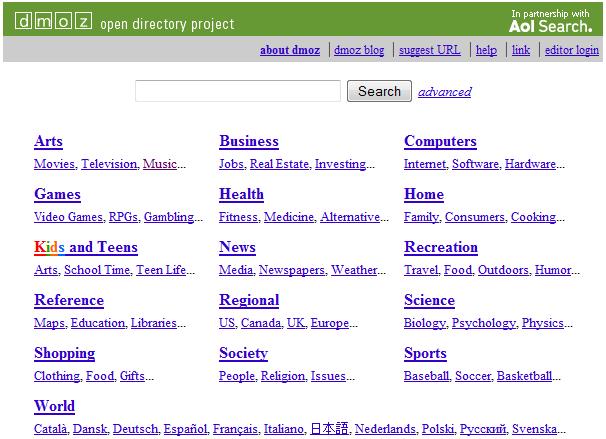Attaining the coveted DMOZ listing is admittedly not as coveted as it once was. Links don’t carry the same weight as they once did and Google and other search engines don’t place as much importance on links from DMOZ as they once did. It’s less about the weight the link carries but more that search engines still trust the editors at DMOZ who are the gatekeepers for handing out links. And while this can take months after you submit your site to get approved or denied, depending on the backlog of submissions to DMOZ, I thought I’d still offer tips on how to get a DMOZ listing.
How to Get a DMOZ Listing
If you’re not familiar with it, DMOZ is an open directory project, standing for directory Mozilla. It’s one of the few internet directories which is entirely manually edited which again search engines like. This directory also has a reputation of being difficult to get a link from and only quality sites with an effective pitching strategy can get a listing.
Most people aren’t familiar with this directory and even less refer to it to find what they’re looking for; directories have long since lost that ground to search engines, so you’re looking for the link juice/authority which comes with a link rather than relying on it as a source of traffic. Now let’s talk about how to get a DMOZ listing.
There are two fundamental ways to get a DMOZ listing – become an editor and add your site yourself or pitch it to an existing editor. Let’s cover what goes into both.
Become an Editor – DMOZ is run by real people like you who oversee and maintain the directory to ensure low quality sites don’t get in. Becoming an editor sounds like a lot of work but it’s not as bad as it sounds. It’s easy to become an editor; you simply sign up on the DMOZ site for the section you’d like to be an editor for. The catch is that you can’t just sign up and add your site; they anticipate abuses like that and if you try it your site will get blacklisted from the directory.
Instead you have to actually do your job for awhile and go through any existing queue of submitted sites from other webmasters for your category, deciding whether or not they belong in the directory. After you’ve kept your head down and done the work for a time, then and only then can you go ahead and add your site.
Pitch It – The easier but less guaranteed way is to pitch your site to an existing editor. The best way to increase your chances of getting your site listed in DMOZ is to first have a good site which offers a quality service, information, a quality user experience, etc. Predominantly affiliate sites don’t get accepted nor do squeeze pages.
When it comes to submitting your site, first it’s very important that when choosing your site’s category that you’re as precise as possible. For example, with my mastering website, I don’t just submit to the “arts” category or even the “music” subcategory within it. I go further to “business” and then “production”. DMOZ editors don’t want to fix your mistakes or argue with you about which category your site should really fall under, so get it right the first time.
The other important area is the description field. Be as terse and non promotional as possible when describing your site. So I don’t talk about my competitive rates I just mention that the site offers professional online mastering services. Just put yourself in the mindset of someone looking for your particular service or site’s focus and describe accordingly, but the better your description the more likely your site will be approved.
That’s it. Sorry to say there aren’t any real tricks or secrets beyond what I’ve mentioned to getting a DMOZ listing. Despite what some webmasters are beginning to say, a listing in the web’s most respected directory is still well worth the effort.
